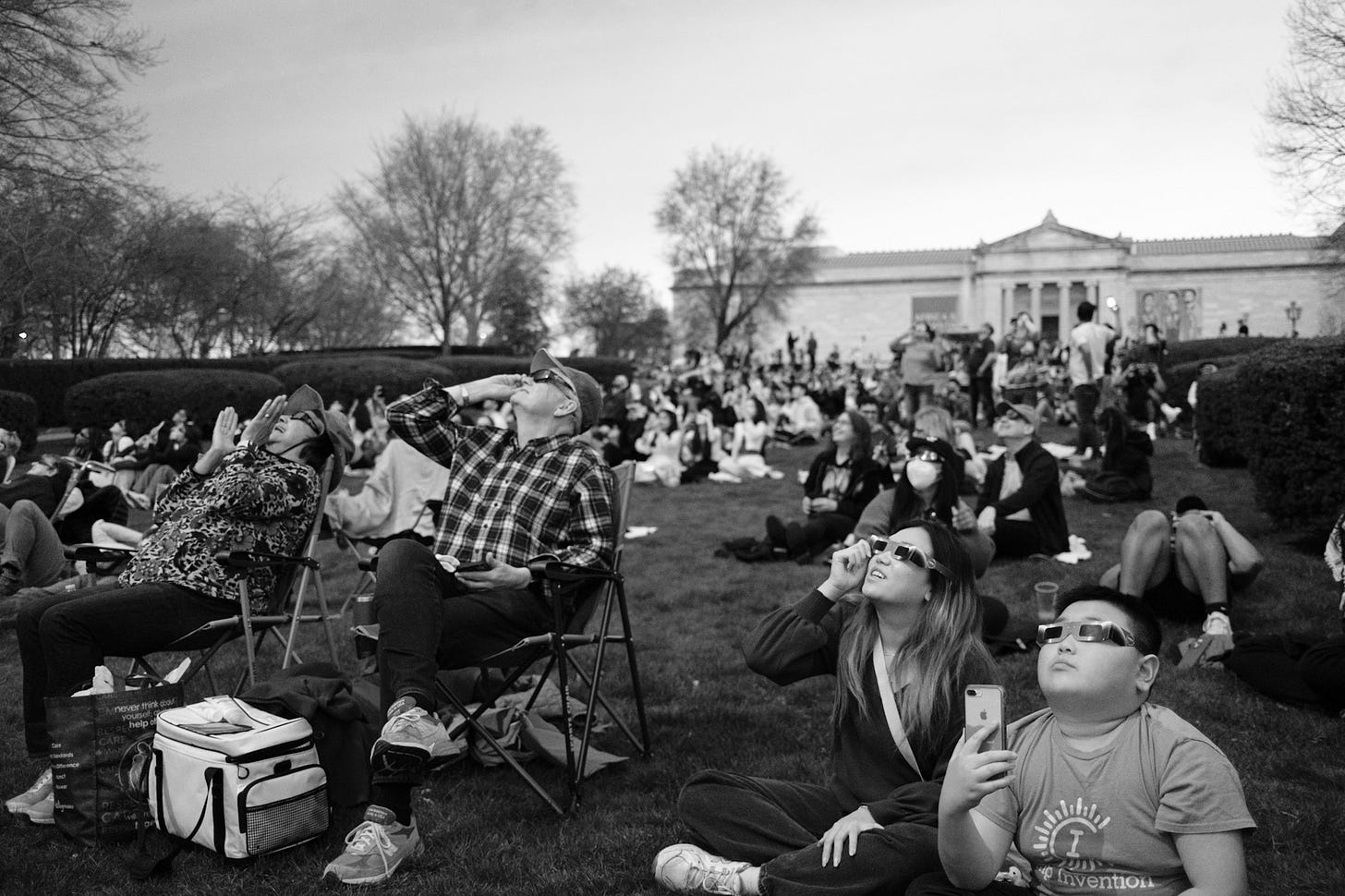There’s a tendency to believe that a photograph must be historically significant, thematically extreme, or a technical masterpiece in order to be meaningful.
Speaking as an American, much of our history is amorally decorated with iconic photographs embodying those qualities, for better or worse. Still, meaning is a multi-dimensional term that often exists outside of the sensational, and is largely defined by the personal.
As I reflect on my life, standout memories certainly include birthdays, concerts, and even last year’s solar eclipse. Some of my best images certainly hit all of the classical compositional notes and captured genuinely spectacular events.

However, just as many fond memories include days whose dates I can’t remember. Regular Tuesdays that started out like the last, but were enhanced by a commitment to being present and receptive to inspiration.
Yes, some of my best photographs contain celestial spectacles, but many others are simply moments of peace among individuals, couples and even animals.
Leonardo da Vinci has a quote attributed to him, stating “The artist sees what others only catch a glimpse of.” To a degree, this idea gives us artists an advantage.
However, it were easy for everybody to realize the value in the world around us, perhaps everybody would be an artist, or more people would be appreciative of life and nature. Looks like we have work to do.
Street photography has the distinct capacity to demand our full focus to the mundane, and articulate rhythm out of pure happenstance. Through frozen time and abstracted elements, artists can communicate moving, insightful visuals.
I treasure the poetry within everyday life. From Ilse Bing, to Edward Hopper, to Robert S. Duncanson, artists have transformed the mundane into the sublime, expressing the themes and ideas we hold most dearly.
I empower photographers to reach beyond the spectacular and focus their lens on the mundane for reasons we’ll further discuss.
Shared Humanity
As I enter my sixth year of street photography, I’ve been endlessly inspired by the moments of genuine humanity that unfold on city streets. While I appreciate the prestige of professional work, the rawness of candid life has a unique way of bringing me back to earth.
The world we live in has become increasingly plastic. Be it headlines, clickbait, AI, misleading edits or the foods we eat, there’s a genuine longing for authentic impressions of what humanity is, does, encounters and strives for.
Expressions of focus, togetherness, immediacy, and infinitely more color the faces of passersbys. Witnessing everyday people traverse the spectrum of human condition allows new ways of storytelling and relating to the world around you. There’s no script on the streets, and they’re fertile soil for imaging the above in ways that contribute to my next point.
Connecting with Community
One of the “given” experiences you’ll have while walking around with camera gear is meeting many people. Often times, I’m greeted and asked what I’m photographing, or if I’m a tourist, and folks are surprised that someone is walking around capturing the very spaces they pass without a second thought.
When you immerse yourself within your common surroundings, a prerequisite commitment is investing your presence within the local community. No amount of likes has ever brought me more joy than the precious human interaction I have on the streets.
I haven’t had these sorts of connections on fashion shoots, networking events, news assignments, promotional events, etc — not to say it isn’t possible. Those venues have their niceties, but this is an essence uniquely poised for everyday settings.
This magic isn’t reserved for the photographers with the best camera or most clout, but those with the desire to connect with their immediate environment.
Sometimes, the situation goes beyond candid and amazing conversations happen. In those special moments, all differences vaporize, and interaction happens on a transformative, respectful level.
The Photographer as Artist and Historian
The meaning of life may be up for debate, but it’s not a stretch to say that we all desire to leave a fingerprint of our existence.
Many of us won’t grace magazine covers, go viral online, or be plastered on billboards. However, once photographers realize that “making history” is on the other side of our doorstep, we can step into true our power as record-creating artists.
Photography is a perfect union of art and history. Through it, all barriers to entry for being a documentarian, artist, and community member vanish. You gain the ability to chronicle the everyday moments that truly characterize a city.
Aesthetics aside, on a subject level, I’m rarely enthralled by the paintings of monarchs and royalty — it’s always the artists like Vermeer and Hopper who painted everyday life that captivates me. Same with 19th and 20th-century photography. It’s the street and documentary photography by artists who saw the value in common life that is spellbinding for me.
By expressing the poetry within the mundane, we can continue the lineage of preserving moments that provide insight into our lives, and make art from everyday life. All photographers, regardless of city, background, or brand preference, can actualize this potential and create catalogs that define their era.












Another great work brother.
Excellent post